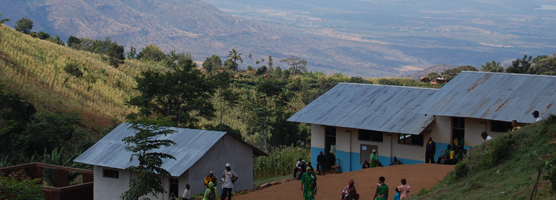Bumbuli

With an average elevation of 1,163 meters above sea level, the history of Bumbuli is linked to the Usambara Mountains, which are part of the Eastern Arc Mountains, a crescent of eleven individual ancient mountain blocks that run parallel to the Tanzanian coast.
It’s unclear exactly when the first humans lived in the Usambaras, but is likely that people have been here for at least 2000 years. Today, Bumbuli is primarily made up of the WaSambaa people. The first king of the WaSambaa was Mbegha, who, from the mid 1700’s started the Kilindi dynasty. Mbegha’s son, Bughe made his capital at Vuga, on a hilltop. The kingdom reached its height under Kimweri ya Nyumbai who ruled between early 1800’s to the 1860’s. Early European travelers such as Johann Krapf (1848) and Burton and Speke (1857) called at Kimweri’s capital.
Research shows that early European travelers describe the Sambaa as skilled farmers; growing bananas in the mountains and maize in the plains; keeping cattle and sheep and using manure for fertilizer; building long irrigation systems and sophisticated ways of soil conservation and fertility improvement.
The second half of the 19th century was a difficult time for the people of the Usambaras. Trade had brought firearms into the area and the Kilindi fought many wars with rebelling groups and neighbouring tribes. As their military control broke down, the mountain were raided for slaves, cattle and food. In 1885, the Sambaa chief, Kibanga, signed away his territory to a Herr Juhlke representing a colonial association from Frankfurt. Otto von Bismark, the German Chancellor declared Tanganyika a colony in 1891, suppressed opposition with force and hanged Chief Kimweri’s grandson, Mputa in 1895 at Mazinde. The kingdom effectively ended in 1898 when a fire destroyed the capital at Vuga.
Lushoto was the first capital of German East Africa, a colonial period from the 1891 to 1918, and the area was popular with settlers, hence the German place name of Wilhelmstal after Emperor Wilhelm II. Large farms and plantations were created, and the district was valued for its pleasant mountain climate. Numerous Church missions were created, and remain active, such as the Bumbuli Mission. The colony, later called Tanganyika, became a British mandate territory after World War I.
Copyright © 2010 - January Makamba - All rights reserved. Conforms to W3C Standard XHTML & CSS
